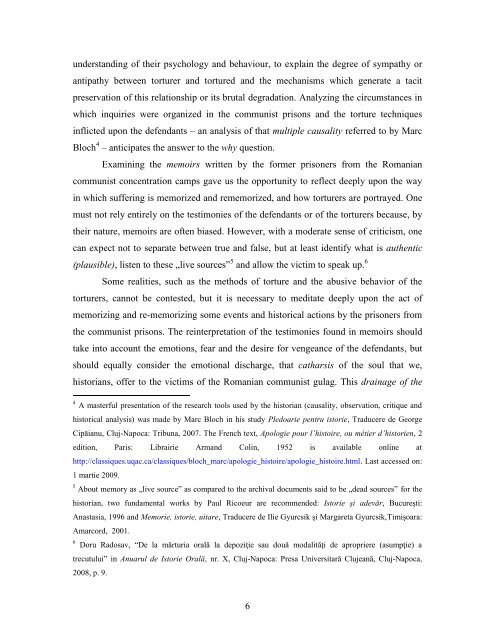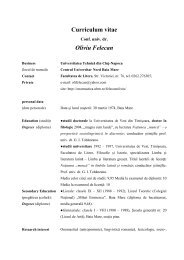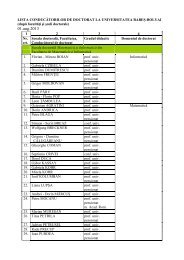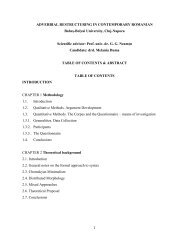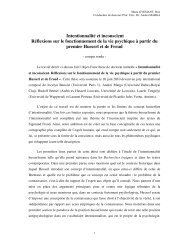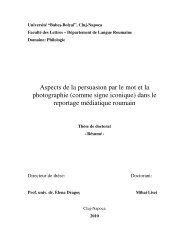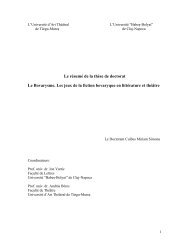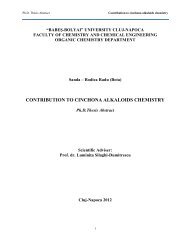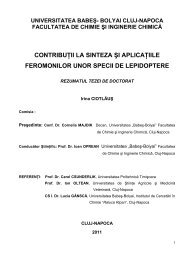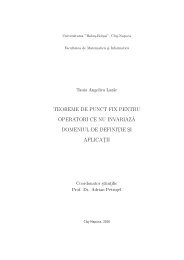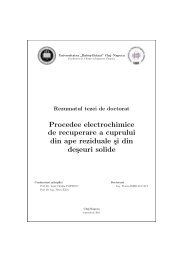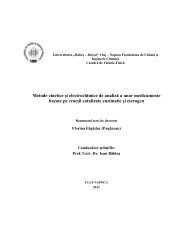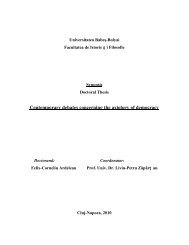The image of the communist torturer as reflected
The image of the communist torturer as reflected
The image of the communist torturer as reflected
You also want an ePaper? Increase the reach of your titles
YUMPU automatically turns print PDFs into web optimized ePapers that Google loves.
understanding <strong>of</strong> <strong>the</strong>ir psychology and behaviour, to explain <strong>the</strong> degree <strong>of</strong> sympathy or<br />
antipathy between <strong>torturer</strong> and tortured and <strong>the</strong> mechanisms which generate a tacit<br />
preservation <strong>of</strong> this relationship or its brutal degradation. Analyzing <strong>the</strong> circumstances in<br />
which inquiries were organized in <strong>the</strong> <strong>communist</strong> prisons and <strong>the</strong> torture techniques<br />
inflicted upon <strong>the</strong> defendants – an analysis <strong>of</strong> that multiple causality referred to by Marc<br />
Bloch 4 – anticipates <strong>the</strong> answer to <strong>the</strong> why question.<br />
Examining <strong>the</strong> memoirs written by <strong>the</strong> former prisoners from <strong>the</strong> Romanian<br />
<strong>communist</strong> concentration camps gave us <strong>the</strong> opportunity to reflect deeply upon <strong>the</strong> way<br />
in which suffering is memorized and rememorized, and how <strong>torturer</strong>s are portrayed. One<br />
must not rely entirely on <strong>the</strong> testimonies <strong>of</strong> <strong>the</strong> defendants or <strong>of</strong> <strong>the</strong> <strong>torturer</strong>s because, by<br />
<strong>the</strong>ir nature, memoirs are <strong>of</strong>ten bi<strong>as</strong>ed. However, with a moderate sense <strong>of</strong> criticism, one<br />
can expect not to separate between true and false, but at le<strong>as</strong>t identify what is au<strong>the</strong>ntic<br />
(plausible), listen to <strong>the</strong>se „live sources” 5 and allow <strong>the</strong> victim to speak up. 6<br />
Some realities, such <strong>as</strong> <strong>the</strong> methods <strong>of</strong> torture and <strong>the</strong> abusive behavior <strong>of</strong> <strong>the</strong><br />
<strong>torturer</strong>s, cannot be contested, but it is necessary to meditate deeply upon <strong>the</strong> act <strong>of</strong><br />
memorizing and re-memorizing some events and historical actions by <strong>the</strong> prisoners from<br />
<strong>the</strong> <strong>communist</strong> prisons. <strong>The</strong> reinterpretation <strong>of</strong> <strong>the</strong> testimonies found in memoirs should<br />
take into account <strong>the</strong> emotions, fear and <strong>the</strong> desire for vengeance <strong>of</strong> <strong>the</strong> defendants, but<br />
should equally consider <strong>the</strong> emotional discharge, that catharsis <strong>of</strong> <strong>the</strong> soul that we,<br />
historians, <strong>of</strong>fer to <strong>the</strong> victims <strong>of</strong> <strong>the</strong> Romanian <strong>communist</strong> gulag. This drainage <strong>of</strong> <strong>the</strong><br />
4 A m<strong>as</strong>terful presentation <strong>of</strong> <strong>the</strong> research tools used by <strong>the</strong> historian (causality, observation, critique and<br />
historical analysis) w<strong>as</strong> made by Marc Bloch in his study Pledoarie pentru istorie, Traducere de George<br />
Cipăianu, Cluj-Napoca: Tribuna, 2007. <strong>The</strong> French text, Apologie pour l’histoire, ou métier d’historien, 2<br />
edition, Paris: Librairie Armand Colin, 1952 is available online at<br />
http://cl<strong>as</strong>siques.uqac.ca/cl<strong>as</strong>siques/bloch_marc/apologie_histoire/apologie_histoire.html. L<strong>as</strong>t accessed on:<br />
1 martie 2009.<br />
5 About memory <strong>as</strong> „live source” <strong>as</strong> compared to <strong>the</strong> archival documents said to be „dead sources” for <strong>the</strong><br />
historian, two fundamental works by Paul Ricoeur are recommended: Istorie şi adevăr, Bucureşti:<br />
An<strong>as</strong>t<strong>as</strong>ia, 1996 and Memorie, istorie, uitare, Traducere de Ilie Gyurcsik şi Margareta Gyurcsik,Timişoara:<br />
Amarcord, 2001.<br />
6 Doru Radosav, “De la mărturia orală la depoziţie sau două modalităţi de apropriere (<strong>as</strong>umpţie) a<br />
trecutului” in Anuarul de Istorie Orală, nr. X, Cluj-Napoca: Presa Universitară Clujeană, Cluj-Napoca,<br />
2008, p. 9.<br />
6


